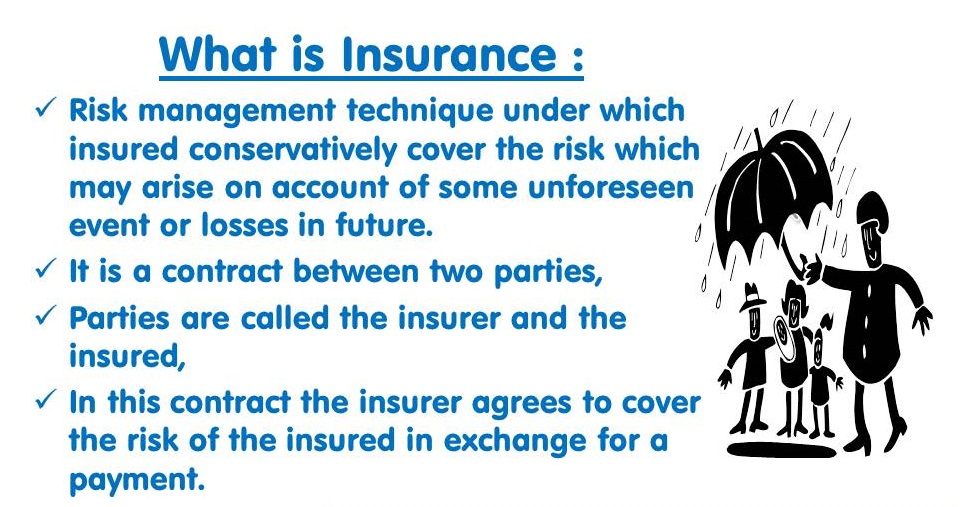- Home
- Business Processes
- Industry Knowledge
- Aerospace Industry
- Automotive Industry
- Banking Domain
- BFSI Industry
- Consumer/ FMCG Industry
- Chemicals Industry
- Engineering & Construction
- Energy Industry
- Education Domain
- Finance Domain
- Hospitality Domain
- Healthcare Industry
- Insurance Domain
- Retail Industry
- Travel and Tourism Domain
- Telecom Industry
- Leadership Skills
- eLearning
- Home
- Industry Knowledge
- BFSI Industry
- Overview of Insurance Sector
Overview of Insurance Sector
The insurance industry comprises companies and people who develop insurance policies and sell, administrate, and regulate them. Insurance is a means of protection from financial loss. It is a form of risk management primarily used to hedge against the risk of a contingent, uncertain loss. The insurance Industry manages the risk to people and businesses from the dangers of their current circumstances. Insurance policies are a safeguard against the uncertainties of life.
What is Insurance?
Insurance is the equitable transfer of the risk of a loss, from one entity to another in exchange for payment (known as an insurance premium). It is a form of risk management primarily used to hedge against the risk of a contingent, uncertain loss. The insurance Industry manages the risk to people and businesses from the dangers of their current circumstances.
Insurance is a contract between two parties, the insurer or the insurance company and the insured or the person seeking insurance, whereby the insurer agrees to hedge the risk of the insured against some specified future events or losses, in return for a regular payment from the insured as premium. Insurance policy helps in not only mitigating risks but also provides a financial cushion against adverse financial burdens suffered. Insurance policies are a safeguard against the uncertainties of life.
Development of Insurance as Industry:
The concept of insurance is almost as old as human society and over the years, the insurance industry matured into the form that we know today. In ancient civilization, if someone's home burned down or met with any disaster, the other members of the community would help together to rebuild it. Everyone felt morally bound to help in case their home was the next to burn. Similarly, humans have been managing risk for many years and in primitive times, the insurance in such economies was agreements of mutual aid. This type of insurance has survived to the present day in some countries where a modern money economy with its financial instruments is not widespread.
Early methods of transferring or distributing risk were practiced by Chinese and Babylonian traders as long ago as the 3rd and 2nd millennia BC, respectively. Chinese merchants traveling treacherous river rapids would redistribute their wares across many vessels to limit the loss due to any single vessel's capsizing.
The first written account of an insurance policy is found in the Code of Hammurabi, in the 18th century BC, and was designed to forfeit debts owed due to catastrophe. The Babylonians developed a system that was practiced by early Mediterranean sailing merchants. If a merchant received a loan to fund his shipment, he would pay the lender an additional sum in exchange for the lender's guarantee to cancel the loan should the shipment be stolen or lost at sea. Sailing merchants and caravans used this insurance to protect themselves from the risks of pirates and treacherous natural terrain. And early health insurance by organized guilds in ancient Greek and Roman civilizations aided surviving members or helped to pay funeral expenses.
Achaemenian monarchs of Ancient Persia were the first to ensure their people and made it official by registering the insuring process in governmental notary offices. The insurance tradition was performed each year where different ethnic groups presented gifts to the monarch. The presents were assessed by the confidants of the court and this assessment was registered in special offices. The purpose of registering was that whenever the person who presented the gift registered by the court was in trouble, the monarch and the court would help him.
A thousand years later, the inhabitants of Rhodes invented the concept of the general average. Merchants whose goods were being shipped together would pay a proportionally divided premium which would be used to reimburse any merchant whose goods were deliberately jettisoned in order to lighten the ship and save it from total loss.
Separate insurance contracts (i.e., insurance policies not bundled with loans or other kinds of contracts) were invented in Genoa in the 14th century, as were insurance pools backed by pledges of landed estates. These new insurance contracts allowed insurance to be separated from investment, a separation of roles that first proved useful in marine insurance. Insurance became far more sophisticated in post-Renaissance Europe, and specialized varieties developed.
The first insurance company in the United States underwrote fire insurance and was formed in Charles Town (modern-day Charleston), South Carolina, in 1732. Benjamin Franklin helped to popularize and make standard the practice of insurance, particularly against fire in the form of perpetual insurance.
In India, insurance has a deep-rooted history. It finds mention in the writings of Manu ( Manusmrithi ), Yagnavalkya ( Dharmasastra ), and Kautilya ( Arthasastra ). The writings talk in terms of pooling of resources that could be re-distributed in times of calamities such as fire, floods, epidemics, and famine. Insurance in India has evolved over time heavily drawing from other countries, England in particular.
In the last century, the insurance industry adapted to changing lifestyle and growth, introducing products such as automobile and health insurance. And more recently, changing governmental regulations across the world has impacted the regulations by which the insurance sector operates, enabling other industries, including the banking industry, to offer similar insurance products.

How Insurance Industry Works:
An insurer, or insurance carrier, is a company selling the insurance; the insured, or policyholder, is the person or entity buying the insurance policy. The amount to be charged for a certain amount of insurance coverage is called the premium. The insurance company has to deal with the “Risk Management”, the practice of appraising and controlling risk.
The transaction involves the insured assuming a guaranteed and known relatively small loss in the form of payment to the insurer in exchange for the insurer's promise to compensate (indemnify) the insured in the case of a financial (personal) loss. The insured receives a contract, called the insurance policy, which details the conditions and circumstances under which the insured will be financially compensated.
Insurance is a contract between two parties, the insurer or the insurance company and the insured or the person seeking insurance, whereby the insurer agrees to hedge the risk of the insured against some specified future events or losses, in return for a regular payment from the insured as premium. Insurance policy helps in not only mitigating risks but also provides a financial cushion against adverse financial burdens suffered. Insurance policies are a safeguard against the uncertainties of life.
The insurance industry is comprised of a variety of stakeholders and supplies products and services that are designed to protect businesses and individuals from risks. The insurance industry players provide risk coverage to their clients and simultaneously need to manage their own risks to ensure the competitiveness and profitability of their business model. The insurance environment that is subject to regulatory and legal requirements, competitive forces, margin pressures, and changing customer demands, and industry players need to manage all these factors and provide risk coverage to their clients. Insurance companies adopt strategies that are unique to the environment they operate in to overcome these challenges and to propel growth and market share in a global environment.
This section helps the learners understand key concepts, terminology, issues, and challenges associated with the insurance industry. The later articles focus on the tools and strategies employed to meet some of those challenges. We will discuss the main types of Insurance Industry, the main sectors of the insurance industry and the business drivers, business model, and the competitive environment in the following articles. Enjoy the tutorials on the insurance domain.
Related Links
You May Also Like
-
Parties in the Contract of Insurance
There are two parties in the contract of Insurance. Understand these parties and their definition in the contract of insurance. Learners will learn about the key stakeholders in the insurance business along with a classification of internal and external stakeholders.
-
The insurance industry classifies the different products it offers by sector. The insurance sector is made up of companies that offer risk management in the form of insurance contracts. There are four main insurance sectors: Life & Health Insurance Industry, General Insurance Industry, Specialty Insurance Industry & Reinsurance Industry. This article describes the current insurance industry sectors and their associated activities, products, and services.
-
A primary insurer purchases reinsurance to limit its exposure, usually to one specific type of risk, thereby diversifying its book of risk. Businesses in this industry focus on assuming all or part of the risk associated with existing insurance policies originally underwritten by direct insurance carriers. In other words, the primary activity of this industry is insuring insurance companies. Reinsurance occurs when multiple insurance companies share risk by purchasing insurance policies from other insurers.
-
This article helps the student to understand the legal principles and provisions of the insurance law. Starting with the fundamentals from which law is derived, this article helps the student to understand the salient aspects of any insurance contract, the rights and obligations of parties to the contract, and the legal environment within which insurance practice is carried out. Explore the seven most important principles of insurance.
-
The insurance industry comprises companies and people who develop insurance policies and sell, administrate, and regulate them. Insurance is a means of protection from financial loss. It is a form of risk management primarily used to hedge against the risk of a contingent, uncertain loss. The insurance Industry manages the risk to people and businesses from the dangers of their current circumstances. Insurance policies are a safeguard against the uncertainties of life.
-
Insurance policies are a safeguard against the uncertainties of life. Insurance policy helps in not only mitigating risks but also provides a financial cushion against adverse financial burdens suffered. From a macro perspective Insurance industry turns capital accumulates as premiums into productive investments thereby promoting trade and commerce activities which result in the sustainable economic growth of the economy.
-
Insurance is categorized based on risk, type, and hazards. Logically, any risk that can be quantified can potentially be insured. Understand the importance of insurance and the different types of insurances like Life Insurance or Personal Insurance, Property Insurance, Marine Insurance, Fire Insurance, Liability Insurance, Guarantee Insurance.
-
What is General Insurance Industry?
General Insurance industry providers perform an essential function in today's economy. General insurance is typically defined as any insurance that is not determined to be life insurance. Depending on the type of occupation, risk exposure, and the money involved, the insurance could be different for each industry or business. In underwriting insurance policies, general insurers earn premiums that they further invest.
-
The Business Model of Insurance Industry
The insurance industry business model can be further categorized into two types of main activities, service domain, and support domain. Service domain activities make up the company's value chain and the support domain provides the infrastructure and support to sustain the value chain. Support activities may include corporate services, finance, human resources, or information systems, and technology.
-
BFSI is an acronym for Banking, Financial Services, and Insurance and popular as an industry term for companies that provide a range of such products/services and is commonly used by IT/ITES/BPO companies and technical/professional services firms that manage data processing, application testing, and software development activities in this domain. Banking may include core banking, retail, private, corporate, investment, cards, and the like. Financial Services may include stock-broking, payment gateways, mutual funds, etc. The insurance covers both life and non-life.
Explore Our Free Training Articles or
Sign Up to Start With Our eLearning Courses

About Us
Learning
© 2023 TechnoFunc, All Rights Reserved










